Anti-Skid Protection with Spikes and Studs
go to the online shopAnti-Skid Protection for Horseshoes
One advantage of the plastic cover of our alternative horseshoes is that they inherently have a certain grip due to the material and the profiled surface. Sometimes, however, there are situations in which additional grip in the form of Spikes or studs can be useful. Further below, you will also find an overview of the areas of application and the specifics of the studs that you can buy from us.
Possible Reasons for a Horse Slipping with its Hoof Protection
- The material of the hoof protection: A steel shoe behaves differently than a shoe with a plastic coating. But even with the various plastic shoes and hoof boots that are available on the market, there are differences in terms of 'slipping behaviour'.
- The horse's gait and surefootedness: On the same muddy or rocky path, one horse may gallop while another struggles even at a walk.
- The ground condition and speed play a particularly important role. Mud, gravel or even ice and snow pose different challenges for hoof protection and horse than asphalt or sandy paths. However, a steeply descending road can also become slippery.
- In addition to speed, the riding discipline also plays a role. It makes a big difference whether you are 'only' cantering or whether you also jump or have to ride tight turns at high speed. The requirements for additional grip and the stability of the anti-skid protection are different in show jumping, eventing or even hunting than, for example, when leisure riders lope outdoors.
As there are always several factors that play a role in the topic of anti-slip protection, it is difficult to make a generally valid statement.
The use of spikes and studs as well as the monitoring of their correct fit and intactness during the shoeing period is at the responsibility of the horse owner in cooperation with the on-site farrier. Speed, especially on slippery surfaces and in winter conditions, is always at the discretion of the rider. To prevent injuries, speed must be reduced appropriately. If you are a horse owner in a livery stable, please coordinate the use of spikes and studs with the owner of the stable. Please follow our safety instructions and usage guidelines in the product descriptions.
Snow Protection – Closed Sole Area
When it comes to winter equipment for horseshoes, many people first think of the well-known Snowgrip®. Most of our composite horseshoes and pure synthetic shoes feature an integrated debris guard that largely prevents snowballing . However, depending on snow conditions, it may be necessary to completely seal the sole area of the horseshoe to prevent snow from balling up. For this purpose, you will find Protective Insoles —for traditional steel shoes—and the Hoof Sole Protector for our composite shoes in this category.
Our Studs at a Glance — Differences and Similarities
Closure Plugs / Stud Blanks
Closure plugs prevent dirt from accumulating in the stud hole, helping to preserve the stability of the threaded insert in the horseshoe. We offer both plastic and metal options.
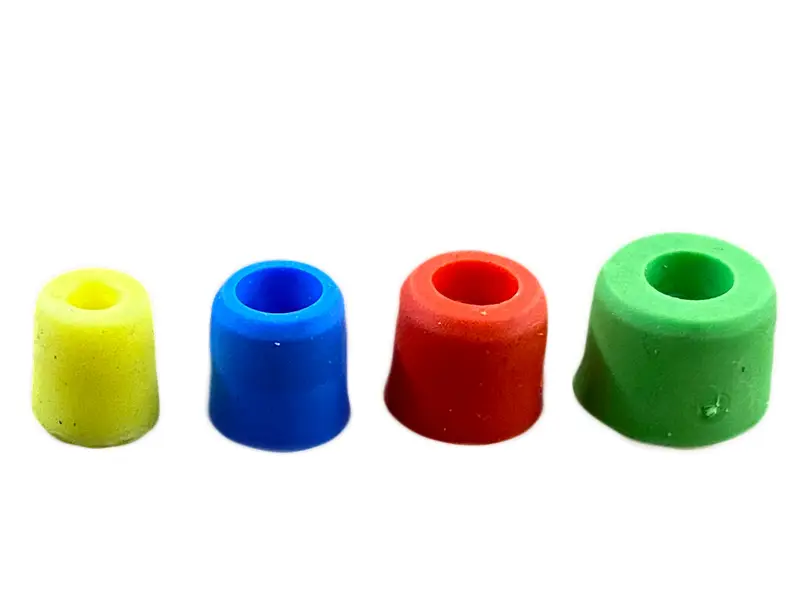
Image V1
Closing Plugs Type 1
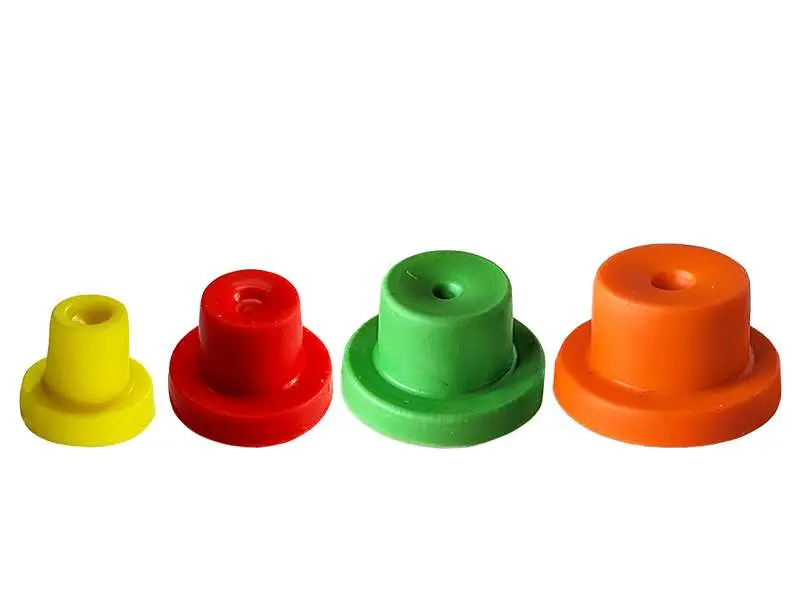
Image V2
Closing Plugs Type 2
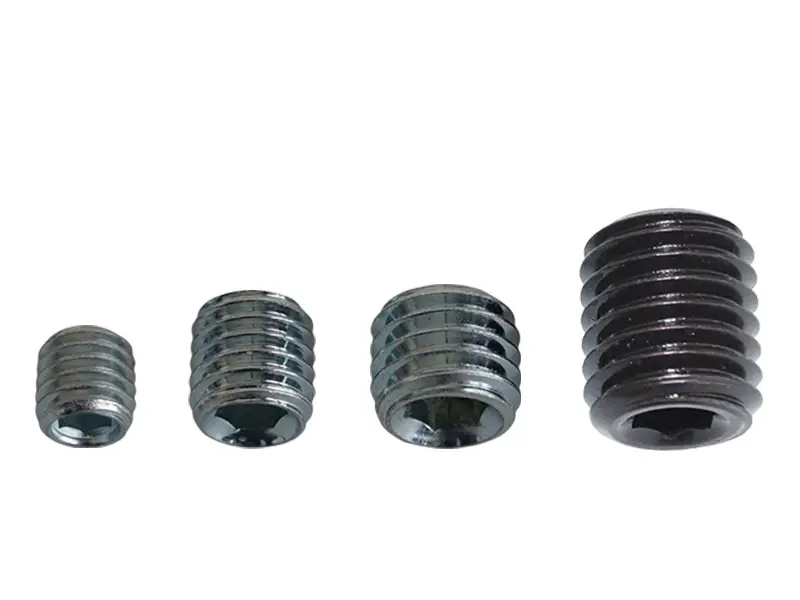
Image V3
Hexagonal Stud Blanks
Steel Shoes and Composite Horseshoes with Stable Thread Inserts
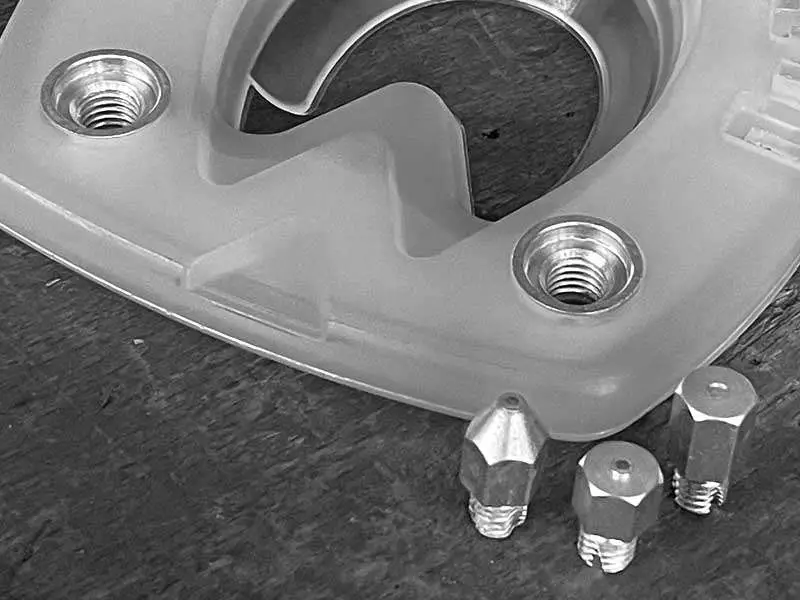
Our studs can be categorized into two groups depending on the type of horseshoe. The largest category includes our studs designed for extreme situations. These studs are designed for threaded inserts that are firmly fixated within the metal core of the composite shoe and of course a steel shoe.
Depending on the thread size, they can be used in steel horseshoes as well as in our composites.
Our Studs in Detail
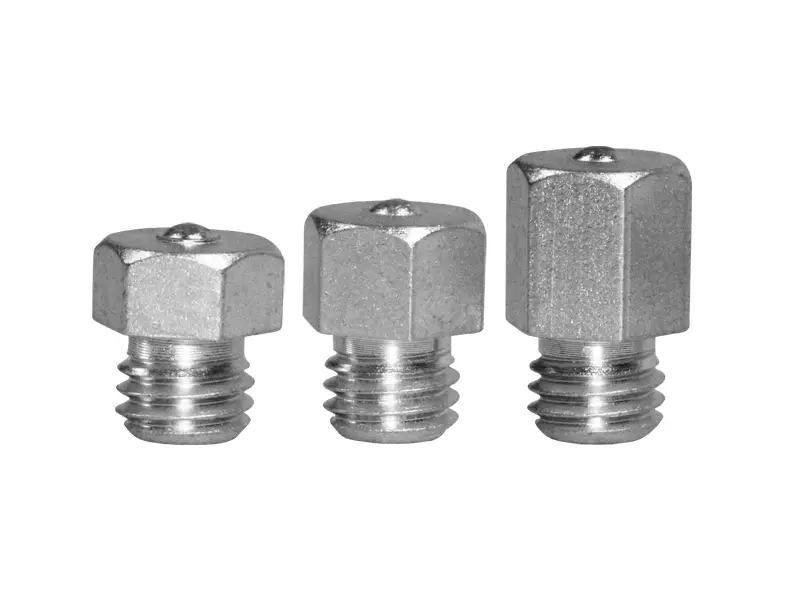
Image 1
Hexagonal Studs
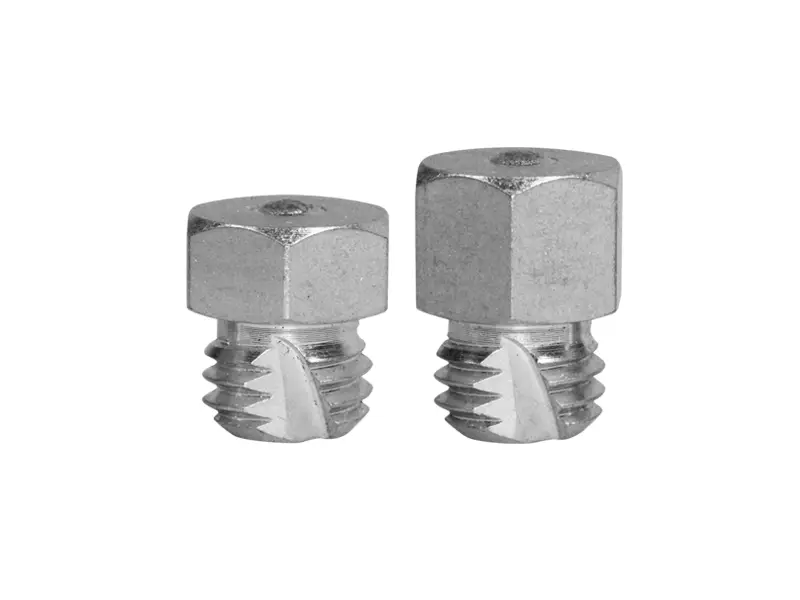
Image 2
Self-Tapping Hexagonal Studs
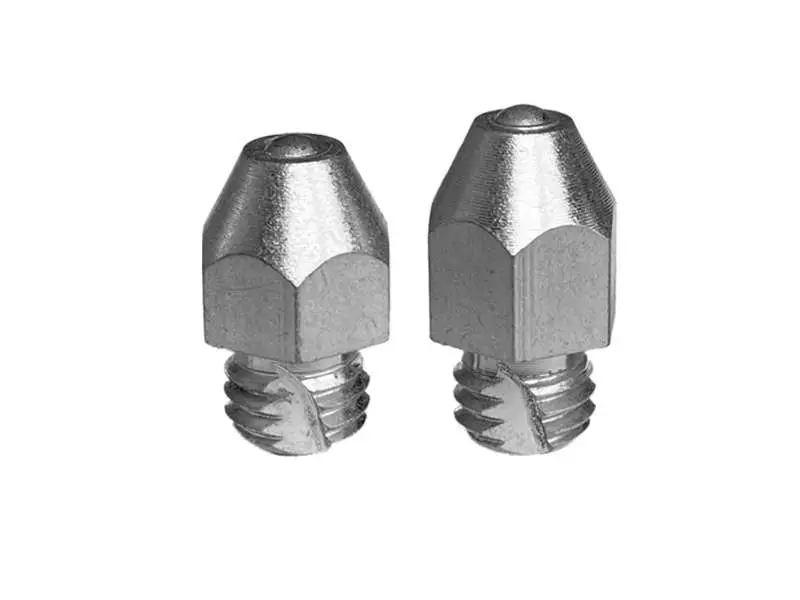
Image 3
Conical Studs "ICE"
| Hexagonal Studs | Self-Tapping Hexagonal Studs |
Conical Studs "ICE" | |
|---|---|---|---|
| Image No. | Image 1 | Image 2 | Image 3 |
| Stud Thread | not self-tapping | self-tapping | self-tapping |
| Stud Change | possible | easy | easy |
| Stud Blanks | closing plugs type 2 (Image V2) or hexagonal stud blanks (Image V3) until the next stud application | ||
| Stud Height | 6mm, 8mm, 12mm | 8mm, 12mm | 12mm, 14mm |
| Effective Height | 3mm, 5mm, 9mm | 5mm, 9mm | 9mm, 11mm |
| Thread Size | M8, M10, M12, M14 | M8, M10, M12, M14 | M8, M10, M12 |
| Compatible Horseshoes |
Jumper,
HDS
,
Traction,
steel shoes with appropriate stud holes
Attention: In case of the open-toed horseshoes , we only recommend the use of 6mm or 8mm studs. |
||
| Riding Styles and Disciplines | for example, but not only: show jumping, eventing, hunting, driving | ||
Stud Holes in the Synthetic Coating – Permanent Stud Application
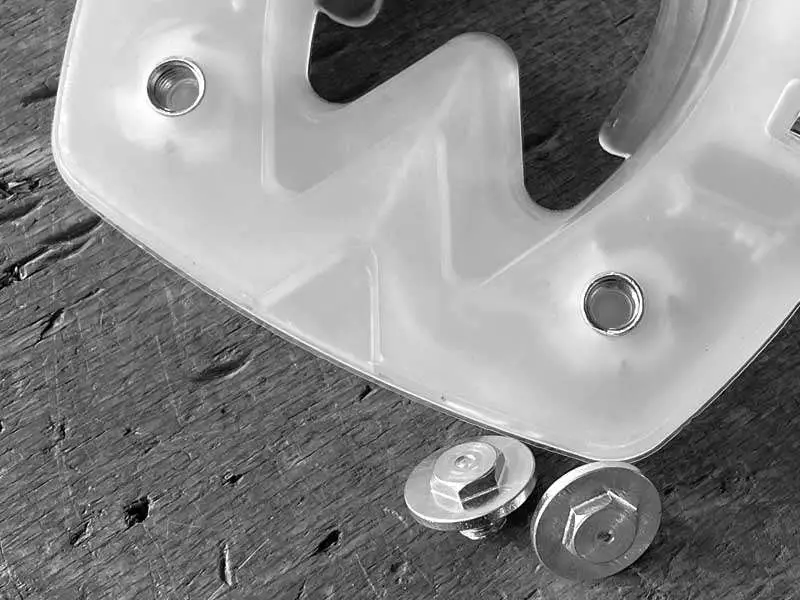
The threaded inserts, which are only fixated within the synthetic coating of our composite shoes are designed for permanent stud application. For this purpose we have developped our anti-skid studs with disc . The disc helps distribute pressure more evenly across the horseshoe /hoof. We recommend using 4mm anti-skid studs for these horseshoes. Larger studs are generally not advised. Our taller Nordic studs are designed exclusively for use in the snowy regions of Nordic countries .
Please note the additional information in our product descriptions and safety instructions when using any studs, especially Nordic studs.
Our Studs in Detail
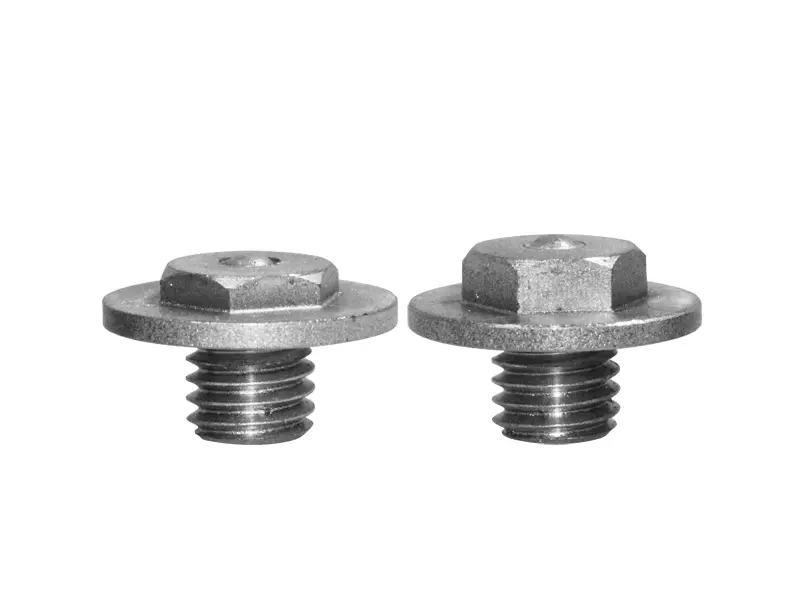
Abb. 4
Anti-skid studs with disk
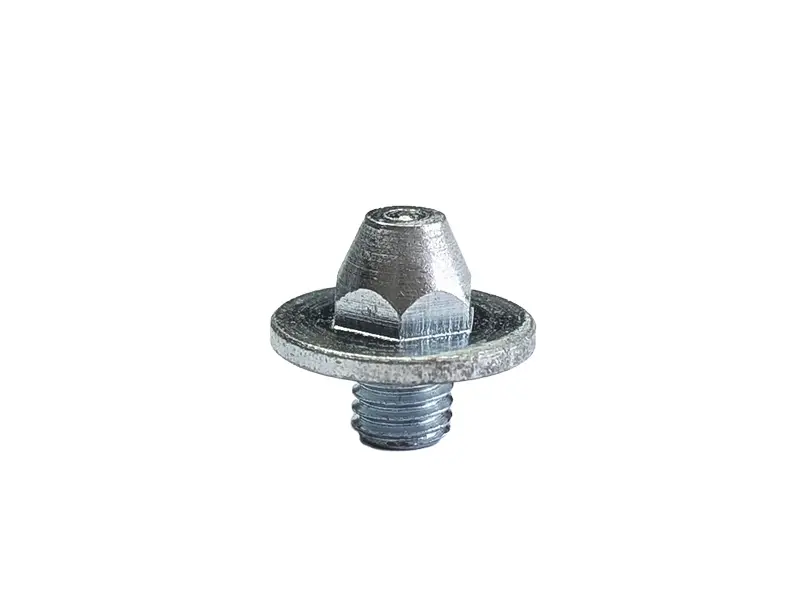
Abb. 5
Special case: Nordic studs
| Anti-skid studs with disk | Stud for Nordic Countries - Nordic | |
|---|---|---|
| Image No. | Image 4 | Image 5 |
| Strud Thread | not self-tapping | not self-tapping |
| Stud Blanks | closing plugs type 1 (image V1) or hexagonal stud blanks (image V3) until the permanent use of the studs | |
| Stud Height | recommended height: 4mm limited use: 6mm |
limited use: 10mm |
| Effective Height | 4mm, 6mm | 10mm |
| Thread Size | M8, M10, M12 | M8 |
| Compatible Horseshoes |
Snow
Edition
Clipped and threaded horseshoes Clipped and threaded HDS |
Under appropriate ground conditions: Snow-Edition Clipped and threaded horseshoes Clipped and threaded HDS |
| Riding Styles and Disciplines |
for example, but not only: leisure riding, orienteering, trail riding not intended for extreme strains such as show jumping, eventing, hunting, driving |
|
Studs for Steel Shoes
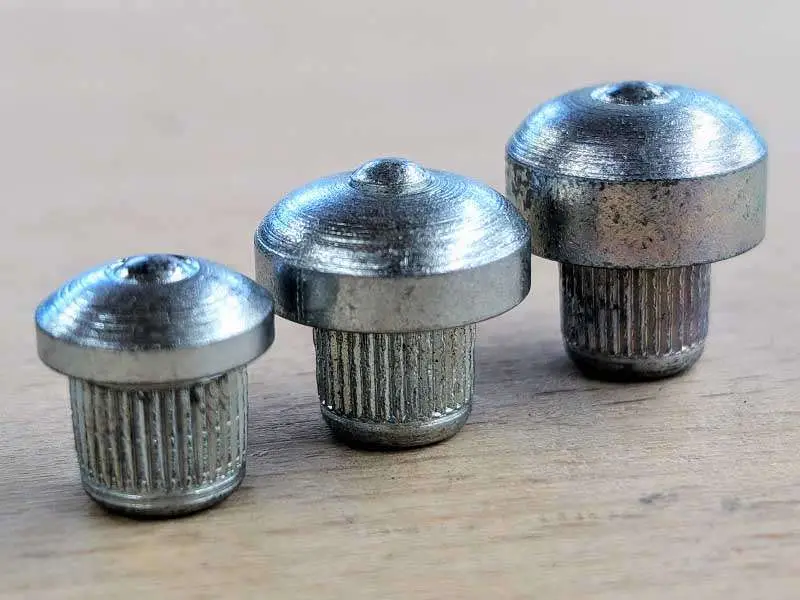
In combination with steel shoes you may use our our drive-in studs, the so-called Speedies as well as our studs without disk (see above) . For further details on our drive-in studs please have a look at our detailed product description.
